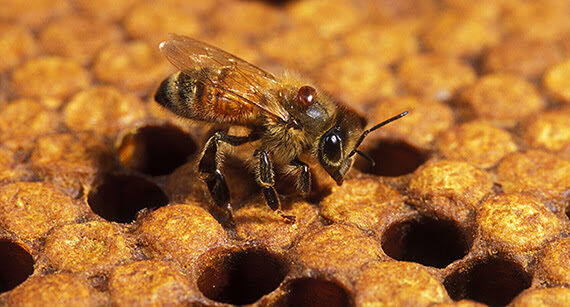AgriLife Extension entomologists: Fire ants, mosquitoes to be more prevalent after rains
With recent rains subsiding in many parts of the state and the re-emergence of warmer, drier weather, Texans should expect to see a proliferation of fire ants and mosquitoes, said Texas A&M AgriLife Extension Service entomologists.
According to Robert Puckett, AgriLife Extension entomologist at Texas A&M University in College Station, the typical ant colony has one or more egg-laying queens, along with worker ants and a number of winged reproductive males and females.
“To establish new colonies, the winged males and females leave the colony for mating flights,” he explained. “These winged ants, capable of reproducing, leave their nest in search of mates. The males die soon after mating as do most of the females, but the surviving females go on to establish new nests.”
Puckett said during rain events, while the fire ants are underground in their nests, water percolates through their colony and collapses many of their tunnels or chambers, so they have to rebuild.
“In doing so, they push the soil back out and create the mounds of various sizes that we see on our lawns,” he said. “But on the positive side, after this activity, the fire ants are no longer hidden or inconspicuous.”
He noted this would be an excellent time of year to consider using the “two-step method” of fire ant control.
“We recommend that in the fall homeowners make a broadcast application of granular fire ant bait if their fire ant mound densities warrant it,” he explained. “This wider application will allow greater coverage and serve to reduce the ant load once spring comes around. If any of the mounds reemerge in the spring, then we suggest direct treatment by a contact insecticide or granular baits.”
Puckett suggested using a granular bait specifically labeled for the control of red imported fire ants.
“Rain can be a further complicating factor in applying the granular bait,” he noted. “We recommend you find a time when at least 72 hours of dry weather are expected after application. Water will dilute the bait and contribute to ‘bait failure’ or a lesser ability of the bait to kill the ant. Also, the bait will absorb the water and make it less palatable to your ants.”
For more information on the two-step method recommended by AgriLife Extension, go to fireant.tamu.edu/controlmethods/twostep/.
If dealing with fire ants isn’t enough, Texans will also see a significant increase in mosquito activity, according to Dr. Sonja Swiger, AgriLife Extension entomologist, Stephenville.
“The floodwater mosquito species are what we’re primarily seeing now,” Swiger said. “These are the species that primarily breed in ponds, ditches, marshes and other open-water locations. These species don’t pose any significant health threat, but they are a nuisance and will bite you pretty much anytime.”
Swiger said as conditions dry, Texans can expect to see more “container breeder” species such as the Aedes mosquitoes, which have a much greater potential for spreading disease.
The Aedes mosquitoes have been identified as vectors for a number of diseases, including Zika, yellow fever, dengue fever, chikungunya and eastern equine encephalitis.
“Also, during late summer and fall is when we tend to see a greater number of instances of West Nile, for which the Culex mosquito is a vector.”
Swiger said the best means to defend against any mosquito-borne illness is to eliminate the vector.
“Attack the mosquitoes at the larval stage by removing standing water and using mosquito dunks in areas where they might breed,” she said. “The ingredients in dunks are also available in granular form, which makes it easier to treat smaller areas of standing water.”
Mosquito dunks, which contain naturally occurring bacterium, can prevent larvae from growing and spreading diseases. They do not pose a threat to people, pets or plants.
She said homeowners should put their efforts toward finding, draining and, if practical, removing any items that might provide a mosquito breeding ground, such as containers, bird baths, toys, tires, bottles and cans.
“It is generally a waste of time, money and effort for the average homeowner to try and control mosquitoes at the adult stage, but if you’re going to have an outdoor event there can be a temporary solution,” Swiger said. “There are some over-the-counter yard application methods, but these last 24 to 48 hours at most and only kill the mosquitoes that are present. However, there’s no residual, so it won’t have any effect the next round of mosquitoes.”
Swiger said at the adult stage the best possible way to defend against mosquitoes is by using “the four Ds—dress, drain, dusk/dawn and defend.
“Dress in long, loose-fitting, light-colored pants and shirts, drain any standing water from around the home, reduce outdoor activity during dusk and dawn and defend yourself with an insect repellent approved by the CDC and EPA,” she said.



